Screening and bioinformatical analysis of differentially expressed genes in nasopharyngeal carcinoma
- PMID: 33753985
- PMCID: PMC7974527
- DOI: 10.7150/jca.48979
Screening and bioinformatical analysis of differentially expressed genes in nasopharyngeal carcinoma
Abstract
Objective: To identify differentially expressed genes via bioinformatical analysis for nasopharyngeal carcinoma (NPC) and explore potential biomarkers for NPC. Methods: We downloaded the NPC gene expression datasets (GSE40290, GSE53819) and obtained differentially expressed genes (DEGs) via GEO2R. Functional analysis of DEGs was performed by Gene Ontology (GO) and Kyoto Encyclopedia of Genes and Genomes (KEGG) analysis. In order to explore the interaction of DEGs and screen the core genes, we established protein-protein interaction (PPI) network. Then the expression level, prognostic and diagnostic analysis of the core genes in NPC were performed to reveal their potential effects on NPC. Furthermore, we obtained the transcription factors (TF) and microRNAs of core genes to construct the coregulatory network. Results: We obtained 124 up-regulated genes and 190 down-regulated genes in total. These genes were found to be related to signal transduction, extracellular matrix organization and cell adhesion based on GO analysis. KEGG analysis revealed that the NF-kappa B (NF-κB) signaling pathway, pathways in cancer were mainly enriched signaling pathways. 25 core genes were obtained by constructing PPI network. Then the high expression of 10 core genes in NPC were verified via GEPIA, Oncomine databases and laboratory experiments. The TF-microRNA coregulatory network of the 10 core genes was built. Survival and diagnostic analysis indicated that SPP1 had negative influence on the prognosis of NPC patients based on two datasets and nine up-regulated core genes (FN1, MMP1, MMP3, PLAU, PLAUR, SERPINE1, SPP1, COL8A1, COL10A1) might be diagnostic markers for NPC. Conclusions: Core genes of NPC were screened out by bioinformatical analysis in the present study and these genes may serve as prognostic and diagnostic biomarkers for NPC.
Keywords: bioinformatical analysis; core genes; microarray; nasopharyngeal carcinoma; prognosis.
© The author(s).
Conflict of interest statement
Competing Interests: The authors have declared that no competing interest exists.
Figures
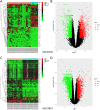

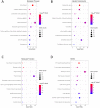
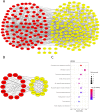

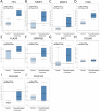

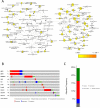
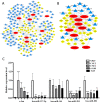

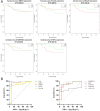
Similar articles
-
Identification of candidate genes of nasopharyngeal carcinoma by bioinformatical analysis.Arch Oral Biol. 2019 Oct;106:104478. doi: 10.1016/j.archoralbio.2019.07.003. Epub 2019 Jul 5. Arch Oral Biol. 2019. PMID: 31319350
-
Identification of Novel Kinase-Transcription Factor-mRNA-miRNA Regulatory Network in Nasopharyngeal Carcinoma by Bioinformatics Analysis.Int J Gen Med. 2021 Oct 30;14:7453-7469. doi: 10.2147/IJGM.S327657. eCollection 2021. Int J Gen Med. 2021. PMID: 34744455 Free PMC article.
-
Bioinformatic identification of candidate biomarkers and related transcription factors in nasopharyngeal carcinoma.World J Surg Oncol. 2019 Apr 1;17(1):60. doi: 10.1186/s12957-019-1605-9. World J Surg Oncol. 2019. PMID: 30935420 Free PMC article.
-
[Screening core genes and cyclin B2 as a potential diagnosis, treatment and prognostic biomarker of hepatocellular carcinoma based on bioinformatics analysis].Zhonghua Gan Zang Bing Za Zhi. 2020 Sep 20;28(9):773-783. doi: 10.3760/cma.j.cn501113-20200818-00461. Zhonghua Gan Zang Bing Za Zhi. 2020. PMID: 33053978 Chinese.
-
The identification of a common different gene expression signature in patients with colorectal cancer.Math Biosci Eng. 2019 Apr 10;16(4):2942-2958. doi: 10.3934/mbe.2019145. Math Biosci Eng. 2019. PMID: 31137244
Cited by
-
Novel prognostic biomarkers in nasopharyngeal carcinoma unveiled by mega-data bioinformatics analysis.Front Oncol. 2024 May 24;14:1354940. doi: 10.3389/fonc.2024.1354940. eCollection 2024. Front Oncol. 2024. PMID: 38854728 Free PMC article.
-
Oncogenic mechanisms of COL10A1 in cancer and clinical challenges (Review).Oncol Rep. 2024 Dec;52(6):162. doi: 10.3892/or.2024.8821. Epub 2024 Oct 11. Oncol Rep. 2024. PMID: 39392043 Free PMC article. Review.
References
-
- Chua MLK, Wee JTS, Hui EP. et al. Nasopharyngeal carcinoma. Lancet. 2016;387:1012–1024. - PubMed
-
- Ng WT, Wong ECY, Lee VHF. et al. Head and neck cancer in Hong Kong. Jpn J Clin Oncol. 2018;48:13–21. - PubMed
-
- Roy Chattopadhyay N, Das P, Chatterjee K. et al. Higher incidence of nasopharyngeal carcinoma in some regions in the world confers for interplay between genetic factors and external stimuli. Drug Discov Ther. 2017;11:170–180. - PubMed
-
- Zhang J, Jia L, Tsang CM. et al. EBV infection and glucose metabolism in nasopharyngeal carcinoma. Adv Exp Med Biol. 2017;1018:75–90. - PubMed
LinkOut - more resources
Full Text Sources
Other Literature Sources
Research Materials
Miscellaneous

